Table of Contents
Come join us now, and enjoy playing your beloved music and browse through great scores of every level and styles!
Can’t find the songbook you’re looking for? Please, email us at: sheetmusiclibrarypdf@gmail.com We’d like to help you!
Sorabji: In the Hothouse (from Two Piano Pieces) sheet music, Noten, partitura, spartiti 楽譜

Best Sheet Music download from our Library.

Please, subscribe to our Library.
If you are already a subscriber, please, check our NEW SCORES’ page every month for new sheet music. THANK YOU!
Browse in the Library:
Or browse in the categories menus & download the Library Catalog PDF:
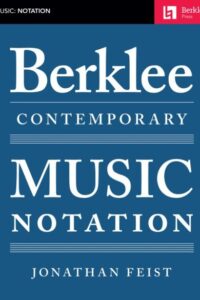
Who was Sorabji?
Kaikhosru Shapurji Sorabji: The Hermit of Modernist Maximalism
In the often-crowded pantheon of 20th-century composers, Kaikhosru Shapurji Sorabji (1892-1988) occupies a unique and enigmatic niche. A composer of staggering ambition, labyrinthine complexity, and self-imposed isolation, Sorabji crafted some of the most monumental, technically demanding, and stylistically idiosyncratic music ever conceived. His work, largely ignored during his lifetime and still challenging audiences today, represents a singular path through modernism – one defined by maximalism, intricate ornamentation, transcendental virtuosity, and a fierce, almost hermetic, independence.

Biography: A Self-Forged Identity
- Birth & Heritage: Born Leon Dudley Sorabji on August 14, 1892, in Chingford, Essex, England. His father was a Parsi engineer from India (thus the Persian-derived name Sorabji), and his mother was English-Spanish. This mixed heritage profoundly shaped his sense of identity, though he felt alienated from both cultures.
- The Name: Around 1914, he legally changed his name to Kaikhosru Shapurji Sorabji. “Kaikhosru” and “Shapurji” were Persian names chosen for their resonance and connection to ancient Persian history and Zoroastrianism, reflecting his deliberate construction of a unique persona.
- Musical Formation: Largely self-taught. He received some piano lessons in his youth but had no formal composition training. His musical education came through voracious listening, score study (especially Bach, Liszt, Busoni, Debussy, Ravel, Scriabin, Szymanowski, Medtner), and wide reading in literature, philosophy, and the occult.
- Early Career & Criticism: Worked as a music critic (under the pseudonym “S. Godfrey”) for outlets like The New Age and The New English Weekly from the 1910s to the 1930s. His critiques were famously acerbic, insightful, and often scathing, particularly targeting English musical provincialism and composers he deemed mediocre (which was most of them).
- The Recluse: Deeply disillusioned by the musical establishment and critical reception to his early performances (which were rare and often controversial), Sorabji gradually withdrew from public musical life starting in the late 1930s. After his mother’s death in 1940, he retreated almost completely to his secluded home “The Eye” in Corfe Castle, Dorset, where he lived with his companion, Reginald Norman Best, until his death. He forbade performances of his music for decades.
- The Ban Lifted: In 1976, pressured by a growing underground interest spearheaded by pianists like Yonty Solomon and Alistair Hinton (who later became his literary executor), Sorabji reluctantly lifted the ban on performances, provided he approved the performer.
- Death: Sorabji died on October 15, 1988, in Winfrith Newburgh, Dorset, leaving behind a colossal legacy of unpublished manuscripts.
Works: Monuments of Sound

Sorabji’s output is vast and overwhelmingly dominated by solo piano music, though he also composed orchestral works, chamber music, organ symphonies, and songs. His works are renowned for their extreme length, density, and technical difficulty, pushing the boundaries of playability.
- Key Masterpieces:
- Opus Clavicembalisticum (1930): His most famous (or infamous) work. A colossal 4+ hour piano epic in 12 movements (including fugues, passacaglias, toccatas, cadenzas), often considered one of the most challenging solo piano works ever written. A summit of contrapuntal complexity and virtuosic display.
- Symphonic Variations for Piano (1935-37): Another monumental work, exploring vast variation forms over an extended duration.
- Sequentia Cyclica super “Dies iræ” ex Missa pro Defunctis (1948-49): A massive cycle of 27 variations on the “Dies Irae” chant, demonstrating his intricate contrapuntal and transformative skills.
- 100 Transcendental Studies (1940-44): True to their name, these studies explore extreme technical and expressive demands far beyond those of Liszt or Chopin.
- Symphonies for Solo Piano: Several exist, including his Symphony No. 2 (“Jāmī”), blending orchestral textures and scope onto the piano.
- Gulistān – Nocturne for Piano (1940): A prime example of his lush, perfumed, and incredibly intricate “Persian”-inspired style.
- Concerti: He wrote several for solo piano and orchestra (e.g., Concerto per suonare da me solo e senza orchestra, per divertirsi), which are symphonic in scale and require superhuman virtuosity.
- Symphonies for Organ: Vast, complex works exploring the sonic possibilities of the instrument.
Analysis of Style: A Universe of Complexity
Sorabji’s style is instantly recognizable yet difficult to categorize. It synthesizes diverse elements into a unique and overwhelming whole:
- Maximalism: This is the defining characteristic. Sorabji embraced extremes:
- Length: Works lasting several hours are common.
- Density: Highly polyphonic textures, often with multiple independent melodic lines woven together in complex counterpoint (influenced by Bach, Busoni).
- Virtuosity: Demands transcendental technique – cascades of notes, complex polyrhythms, wide leaps, immense power, and extreme delicacy. He wrote as if the pianist had four hands.
- Ornamentation: Baroque-like ornamentation (trills, mordents, turns, grace notes) is ubiquitous, often layered and integral to the texture, creating shimmering, kaleidoscopic surfaces (influenced by Scriabin, Szymanowski, Middle Eastern/Persian music).
- Dynamic Range: From barely audible whispers to thunderous, percussive climaxes.
- Harmony: A complex fusion:
- Rooted in late-Romantic chromaticism (Scriabin, Szymanowski, early Schoenberg).
- Freely employed dissonance, clusters, and intricate chord structures.
- Often retained a sense of tonal centers or polarity, even amidst dense chromaticism (unlike strict atonality).
- Incorporated modal inflections, sometimes evoking Persian or Spanish flavors.
- Rhythm: Highly complex and fluid:
- Frequent use of polyrhythms (multiple simultaneous rhythms), cross-rhythms, and nested tuplets (triplets within quintuplets, etc.).
- Tempo often fluctuates wildly, requiring immense control.
- A sense of improvisatory freedom within highly structured forms.
- Form: Often large-scale, complex, and idiosyncratic:
- Favored variations (passacaglias, chaconnes), fugues, toccatas, and intricate multi-movement structures (like the Opus Clavicembalisticum).
- Forms were often expansive and cumulative, building through layered repetition and intensification rather than traditional development.
- Architecture was paramount, even in the densest textures.
- Influences (Assimilated, Not Imitated):
- Ferruccio Busoni: The most profound influence. Busoni’s ideas of “Young Classicism,” the transcendental potential of the piano, the fusion of Bachian counterpoint with modern harmony, and the concept of “Junge Klassizität” resonated deeply. Sorabji dedicated his Opus Clavicembalisticum to Busoni’s memory.
- Franz Liszt: Virtuosity, thematic transformation, large-scale forms, and the symphonic poem concept translated to piano.
- J.S. Bach: Contrapuntal mastery, structural rigor, and the use of forms like fugue and passacaglia.
- Alexander Scriabin: Mysticism, harmonic language, dense textures, and ecstatic climaxes.
- Karol Szymanowski: Sensuous harmony, intricate ornamentation (especially in the “Persian” inspired works like Métopes and Masques), and voluptuous textures.
- Debussy & Ravel: Color, texture, exoticism, and pianistic refinement.
- Mediterranean & Persian Cultures: While not authentically recreating these styles, he evoked their essence through ornamentation, melodic turns, and titles (Gulistān, Jāmī), reflecting his fascination with his Persian heritage and the wider Orient.
- Aesthetic: Sorabji’s music aimed for:
- Transcendence: Pushing beyond perceived limits of instrument, performer, and listener.
- Luxuriance & Opulence: A rich, sensual, almost decadent sound world.
- Intellectual Rigor: Underlying the sensual surface was meticulous structural planning.
- Individualism: A complete rejection of prevailing trends (serialism, neoclassicism, minimalism) in favor of his own uncompromising vision.
Legacy: From Obscurity to Cult Status
Sorabji’s legacy is complex and evolving:
- Decades of Neglect: His self-imposed exile and performance ban meant his music was virtually unknown outside a tiny circle for nearly 40 years. Manuscripts were inaccessible, unplayable, and unpublished.
- The Pioneers (1970s-): The lifting of the ban sparked interest. Pianists like Yonty Solomon, Michael Habermann, Geoffrey Douglas Madge (who made the first complete recording of Opus Clavicembalisticum in 1977), and later Marc-André Hamelin, Jonathan Powell, Fredrik Ullén, and Ronald Stevenson began the monumental task of learning, performing, and recording his works. This required immense dedication and technical prowess.
- Publication & Scholarship: The Sorabji Archive, established by Alistair Hinton (Sorabji’s literary executor), has been crucial in cataloging, editing, and facilitating the publication of scores (primarily by Dover Publications and The Sorabji Music Archive). Scholarly work is gradually increasing.
- Recordings Renaissance: The CD era and digital distribution (YouTube, streaming) have been transformative. Dedicated labels (Altarus, BIS, Toccata Classics, Piano Classics) have released numerous recordings, making this once-inaccessible music available globally. Complete cycles of the 100 Studies and other major works are underway.
- The Cult & The Challenge: Sorabji remains a “composer’s composer” and a cult figure. His music is not mainstream concert fare due to its extreme demands and duration. However, it commands deep respect and fascination among pianists, composers, and listeners drawn to its unique sound world and uncompromising vision. He is seen as the ultimate iconoclast, forging a path utterly independent of 20th-century musical fashions.
- Influence: His direct influence on other composers is hard to pinpoint due to his obscurity, but he stands as a powerful symbol of uncompromising artistic integrity and the exploration of extreme complexity and virtuosity. Composers interested in maximalism, intricate counterpoint, or pushing pianistic limits inevitably encounter his shadow.
- Copyright Controversy: The complex copyright status of his works (involving the Sorabji Archive and publishers) has sometimes been a point of friction within the community of performers and scholars seeking access.
Sorabji: The Solitary Giant
Kaikhosru Shapurji Sorabji was a true original. He inhabited a musical universe entirely of his own making, synthesizing diverse influences into a style characterized by unparalleled complexity, sensuous opulence, and transcendental ambition. His deliberate withdrawal from the world ensured decades of obscurity, but the dedication of pioneering performers and the power of recording technology have brought his extraordinary soundscapes to light. While his music remains challenging and demanding, it offers unparalleled rewards: a journey into a world of labyrinthine beauty, overwhelming power, and intellectual fascination. Sorabji stands as a testament to the power of an utterly individual artistic vision, uncompromising in its scope and ambition, a solitary giant whose monumental creations continue to challenge and inspire. He redefined the possible for the piano and left a legacy that continues to unfold as more performers dare to scale his musical Himalayas.
“In the Hothouse” is one of Sorabji’s most evocative and frequently performed works, serving as a perfect entry point into his dense, sensuous sound world. Here’s a detailed look at this fascinating piece:
Context: Two Piano Pieces (1918)
- Composed: 1918 (early in Sorabji’s career, age 26).
- Publication: First published in 1920, making it one of the earliest Sorabji works available in print.
- The Pair: “In the Hothouse” is paired with “Toccata” – a contrasting, hyper-virtuosic, and structurally complex piece showing his Busoni/Liszt influences. “In the Hothouse” offers the sensual, atmospheric counterpoint.
- Significance: Represents Sorabji’s early mastery of texture, harmony, and evocative atmosphere. It predates his gargantuan works but already displays his unique voice.
“In the Hothouse”: A Sensory Immersion
- Title & Imagery: The title instantly conjures an environment: humid, lush, teeming with exotic, overripe plant life, heavy perfumes, and stifling, enclosed heat. Sorabji translates this sensory overload into sound.
- Form & Structure: Relatively free and rhapsodic. It unfolds as a continuous, organic stream of consciousness rather than adhering to strict classical forms. Think of it as an elaborate, decadent arabesque.
- Style & Character:
- Extreme Sensuality: This is the defining feature. The music drips with lush, complex harmonies and suffocatingly rich textures.
- Harmony: Deeply chromatic, rooted in late Scriabin and early Szymanowski. Expect dense, constantly shifting chords: augmented harmonies, whole-tone inflections, unresolved dissonances creating tension, and sudden moments of surprising consonance like shafts of light piercing foliage. It avoids traditional tonality but gravitates around implied centers.
- Texture: Thick, layered, and constantly in motion. Tremolos, trills, rapid filigree (ornamental passages), and cascading arpeggios create a shimmering, humid haze. Melodies are often embedded within this dense undergrowth rather than standing clearly apart. The writing often requires the pianist to sustain multiple layers simultaneously.
- Rhythm: Fluid and flexible, often obscured by the sheer density of notes and ornamentation. Rubato (expressive tempo fluctuations) is essential. While less overtly complex polyrhythmically than his later works, the rhythmic flow feels organic and improvisatory.
- Dynamics & Articulation: Wide dynamic range, often shifting suddenly between extremes (e.g., thunderous climaxes collapsing into fragile whispers). Articulation varies from sharp staccatos to legatissimo passages that blur together. Pedaling is crucial for sustaining the harmonic haze and creating resonance.
- Ornamentation: Quintessential early Sorabji. Trills, mordents, turns, and grace notes are not mere decoration; they are the texture, creating constant flickering movement and contributing to the claustrophobic, teeming atmosphere. This foreshadows the intricate ornamentation dominating his mature style.
- Emotional Landscape: Evokes opulence, decadence, languor, mystery, stifling heat, hidden dangers, and overwhelming sensory stimulation. There’s a sense of beauty bordering on the grotesque due to its sheer intensity.
Influences Audible in “In the Hothouse”
- Scriabin (Primary): The harmonic language (mystic chords, unresolved dissonance, ecstatic climaxes), the sensual atmosphere, and the use of trills/tremolos are deeply indebted to Scriabin’s late sonatas and poems (e.g., Vers la flamme). Sorabji pushes Scriabin’s decadence further.
- Szymanowski: The opulent textures, perfumed harmonies, and “orientalist” exoticism (though abstracted here) strongly recall Szymanowski’s “Métopes” or “Masques,” which Sorabji admired deeply.
- Debussy: The focus on atmosphere, texture, and harmonic color (whole-tone scales, parallel chords) shows Debussy’s influence, though rendered with far greater density and intensity.
- Ravel: The virtuosic filigree and lush harmonies (think “Gaspard de la Nuit,” especially “Ondine” or “Le gibet”) are a touchstone, again amplified.
- Liszt: The rhapsodic freedom and dramatic gestures hint at Liszt, though filtered through a post-Scriabinesque lens.
Performance Challenges
- Texture & Balance: Maintaining clarity amidst the dense, rapidly shifting textures is paramount. The pianist must carefully voice chords and layers to prevent muddiness while sustaining the essential harmonic haze.
- Ornamentation as Texture: Executing the constant ornamentation smoothly and evenly, integrating it into the melodic and harmonic flow rather than treating it as mere decoration.
- Dynamic Control: Navigating the extreme dynamic contrasts and sudden shifts without sounding jarring. Creating a true pianissimo shimmer within complexity is incredibly difficult.
- Rubato & Phrasing: Applying expressive tempo fluctuations naturally while maintaining the overall structural coherence and forward momentum of the rhapsodic form.
- Pedaling: Using the pedal to create resonance and blend without causing harmonic blurring or loss of rhythmic definition. Requires exceptional sensitivity.
- Stamina & Focus: While shorter than his later works (typically 12-15 minutes), the piece demands intense concentration and physical control to sustain the atmosphere and navigate the technical intricacies.
Legacy & Significance of “In the Hothouse”
- Accessibility: It remains one of Sorabji’s most “accessible” works due to its evocative title, relatively shorter duration, and concentrated expression. It’s a frequent choice for pianists introducing audiences to Sorabji.
- Blueprint: It serves as a crucial blueprint for Sorabji’s mature style, showcasing his core preoccupations: sensuality, harmonic density, intricate ornamentation as texture, and atmospheric evocation, all present in embryonic form.
- Performance History: Despite Sorabji’s later ban, “In the Hothouse” (along with the Toccata) was one of the few pieces occasionally performed during his lifetime (e.g., by Sorabji himself and pianist Reginald Paul) and became a key work for the pioneering generation post-1976 (Yonty Solomon, Michael Habermann, Marc-André Hamelin, Jonathan Powell, Fredrik Ullén).
- Gateway Piece: It functions as a vital “gateway drug” into Sorabji’s world. Its success in conveying its intense atmosphere often encourages listeners to explore his more monumental, complex works.
- Standalone Masterpiece: Regardless of its role as an introduction, it stands as a perfectly formed and powerful piece of early modernist piano writing, a miniature tone poem of extraordinary evocative power.
“In the Hothouse” is a sun-drenched, overripe, and intoxicating immersion into Sorabji’s unique aesthetic. It captures the essence of his sensual maximalism in a concentrated dose, showcasing his debt to Scriabin and Szymanowski while asserting his own distinct voice. Its evocative power, technical brilliance, and relative brevity ensure its enduring place as one of his most beloved and frequently performed works, offering a compelling glimpse into the hothouse of Sorabji’s extraordinary musical imagination.
| Artist or Composer / Score name | Cover | List of Contents |
|---|---|---|
| Joe Hisaishi – One Summer’s Day from Encore Spirited Away | Joe Hisaishi – One Summer’s Day from Encore Spirited Away | |
| Joe Hisaishi – Overture (from Nausicaä of the Valley of the Wind) Guitar arr. with TABs |
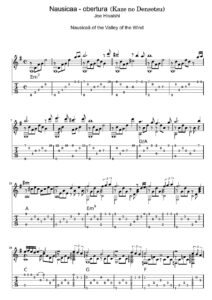 |
|
| Joe Hisaishi – Requiem (from Nausicaä of the Valley of the Wind) Guitar arr. with TABs |
 |
|
| Joe Hisaishi – Sampo from My Neighbor Totoro Guitar Arr. With Tabs |
 |
|
| Joe Hisaishi – Spirited Away Waltz Of Chihiro (Easy Piano Solo) |
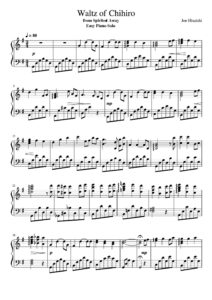 |
|
| Joe Hisaishi – Spirited Away Waltz Of Chihiro (Piano Solo Arr. Kyle Landry) |
 |
|
| Joe Hisaishi – Spirited Away Piano Solo Book |
 |
Joe Hisaishi – Spirited Away Piano Solo Book |
| Joe Hisaishi – Suites Of Spirited Away Cello Piano Sheet Music |
 |
|
| Joe Hisaishi – Summer Guitar Arr. With Tabs from the film Kikujiro (Kikujirō no Natsu) |
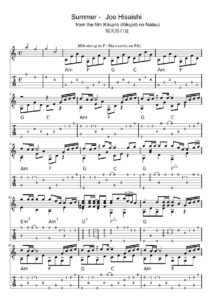 |
|
| Joe Hisaishi – The Path Of The Wind (Easy Piano Solo) From The Film My Neighbor Totoro | Joe Hisaishi – The Path Of The Wind (Easy Piano Solo) From The Film My Neighbor Totoro | |
| Joe Hisaishi – The Path Of The Wind Kaze no Toori Michi (from My Neighbor Totoro) Piano Solo |
 |
|
| Joe Hisaishi – The Wind Forest (From ‘My Neighbor Totoro’) |
 |
|
| Joe Hisaishi – Totoro Theme (from My Neighbor Totoro) Guitar arr. with TABs |
 |
|
| Joe Hisaishi – Totoro Theme (Guitar arr. sheet music with TABs) | Joe Hisaishi – Totoro Theme (Guitar arr. sheet music with TABs) | |
| Joe Hisaishi – Tunnel of Wind (Kaze no Toori Michi) (from My Neighbor Totoro) Guitar arr. with TABs |
 |
|
| Joe Hisaishi – Waltz Of Chihiro (Spirited Away) Guitar Arr. With Tabs |
 |
|
| Joe Hisaishi and Yumi Kimura Studio Ghibli Best Hits Easy Level Piano Solo |
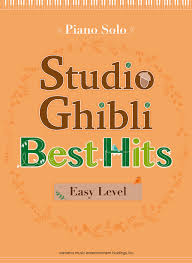 |
Joe Hisaishi and Yumi Kimura Studio Ghibli Best Hits Easy Level Piano Solo |
| Joe Hisaishi Ask Me Why (Mother’s Message) from The Boy and The Heron film Piano Solo |
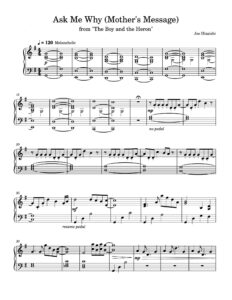 |
|
| Joe Hisaishi Ask Me Why from The Boy and The Heron Piano Solo |
 |
|
| Joe Hisaishi Gake No Ue No Ponyo Sumi Shimamoto |
 |
|
| Joe Hisaishi Jealousy (My Lost City) Piano | Joe Hisaishi Jealousy | |
| Joe Hisaishi Karma | Joe Hisaishi Karma | |
| Joe Hisaishi Kaze Tachinu Tabiji from the Wind Raises Piano solo | Hisaishi Kaze Tachinu Tabiji from the Wind Raises Piano solo | |
| Joe Hisaishi Kids Return Joe Hisaishi Meets Kitano Films | Joe Hisaishi Kids Return | |
| Joe Hisaishi Kiki Delivery Service Yasashisa Ni Tsutsumareta Nara |
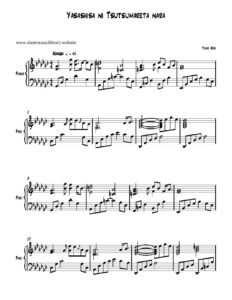 |
|
| Joe Hisaishi Kiki’s Delivery Service Umi No Mieru Machi Piano Solo |
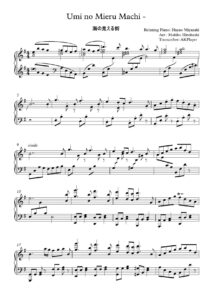 |
|
| Joe Hisaishi La Puta Castle In The Sky Piano Solo |
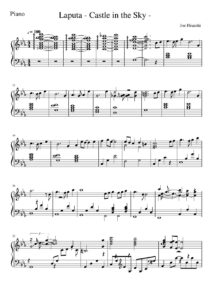 |
|
| Joe Hisaishi Laputa Castle In The Sky |
 |
Joe Hisaishi Laputa Castle In The Sky |
| Joe Hisaishi My Neighbour Totoro (full songbook) |
 |
 |
| Joe Hisaishi Nahoko (An Unexpected Meeting) The Wind Rises |
 |
|
| Joe Hisaishi Nahoko (I Miss You) From The Wind Rises Piano Solo |
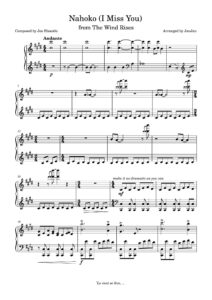 |
|
| Joe Hisaishi Piano Stories (selection) | Joe Hisaishi Piano Stories (selection) | |
| Joe Hisaishi Piano stories I |
 |
Joe Hisaishi Piano Stories I contents —- Joe Hisaishi Piano stories I |
| Joe Hisaishi Piano stories II |
 |
Joe Hisaishi Piano stories II contents —– Joe Hisaishi Piano stories II |
| Joe Hisaishi Piano stories III |
 |
Joe Hisaishi Piano stories III |
| Joe Hisaishi Piano stories IV |
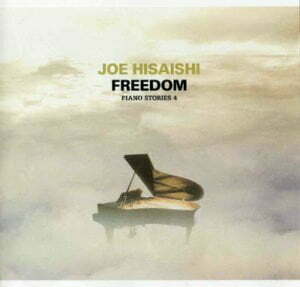 |
Joe Hisaishi Piano stories IV |
| Joe Hisaishi Ponyo Ponyo On The Cliff |
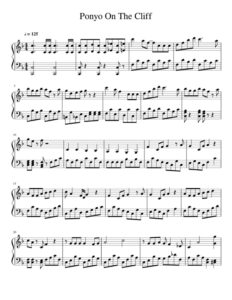 |
|
| Joe Hisaishi Porco Rosso Piano Solo Album |
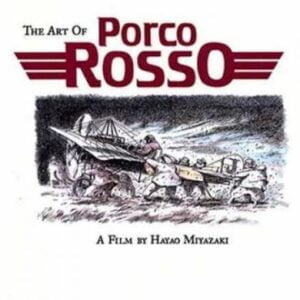 |
 |
| Joe Hisaishi PORCO ROSSO, piano solo, ABRSM Grade 8 2025-26 sheet music |
 |
|
| Joe Hisaishi Princess Mononoke |
 |
Joe Hisaishi Princess Mononoke |
| Joe Hisaishi Princesse Mononoke Legend of’Ashitaka Easy Piano solo |
 |
|
| Joe Hisaishi Princesse Mononoke Legend of’Ashitaka Piano solo sheet music |
 |
|
| Joe Hisaishi Summer (Piano Solo Sheet Music) from the film Kikujiro (Kikujirō no Natsu) |
 |
|
| Joe Hisaishi Tears Of Sosuke From Ponyo On The Cliff By The Sea Piano Solo |
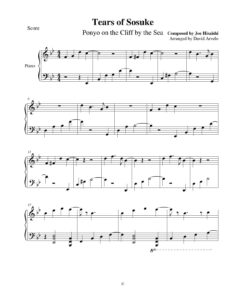 |
|
| Joe Hisaishi The Great Collapse from The Boy and the Heron OST Piano Solo 大崩壊 「君たちはどう生きるか」より | Joe Hisaishi The Great Collapse from The Boy and the Heron OST Piano Solo 大崩壊 「君たちはどう生きるか」より | |
| Joe Hisaishi The Legend Of The Wind Nausicaa Of The Valley Of The Wind |
 |
|
| Joe Hisaishi The Rain (for violin and piano, and for piano solo) Joe Hisaishi Meets Kitano Films | Joe Hisaishi The Rain (for violin and piano, and for piano solo) | |
| Joe Hisaishi The Rain Piano Solo arr. | Joe Hisaishi The Rain Piano Solo arr. | |
| Joe Hisaishi The Sixth Station from Spirited Away |
 |
|
| Joe Hisaishi The Wind Rises Naoko Crossing Paths | Joe Hisaishi The Wind Rises Naoko Crossing Paths | |
| Joe Hisaishi The Wind Rises A Journey (Dream Of A Flight) Piano Solo |
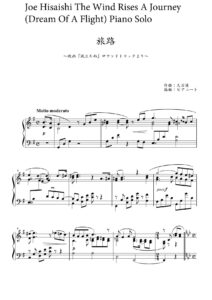 |
|
| Joe Hisaishi The Wind Rises Kaze Tachinu Piano solo |
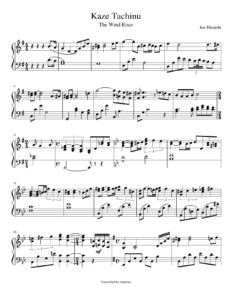 |
|
| Joe Hisaishi Totoro Piano 4 Hands |
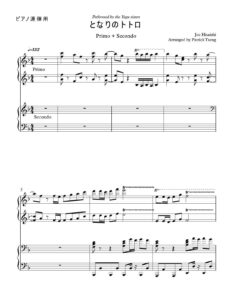 |
|
| Joe Hisaishi- First Love | Joe Hisaishi First Love | |
| Joe Hisashi – Always with me (Anime films) |
 |
|
| Joe Iconis Joey Is A Punk Rocker |
|
|
| Joe Jackson – Be My Number Two | ||
| Joe Jackson Anthology Piano Vocal Guitar Chords |
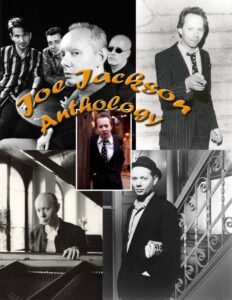 |
|
| Joe Pass The Joe Pass Guitar Method |
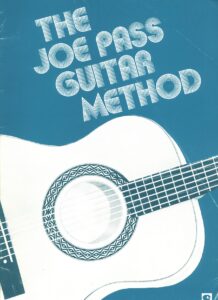 |
Joe Pass The Joe Pass Guitar Method |
| Joe Pass Legend Player Guitar with TABs |
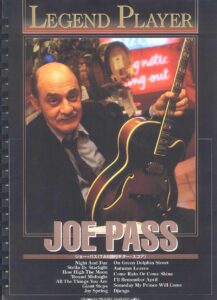 |
Joe Pass Legend Player Guitar with TABs |
| Joe Pass – 13 simple techniques for harmonising melodies | Joe Pass – 13 simple techniques for harmonising melodies | |
| Joe Pass – Ain’t Misbehavin Transcription For Guitar |
 |
|
| Joe Pass – Blue Moon Guitar Jazz Standard | Joe Pass – Blue Moon Guitar Jazz Standard | |
| Joe Pass – Blues (guitar) |
 |
|
| Joe Pass – Blues (Guitar) (Musescore File).mscz | ||
| Joe Pass – How High The Moon (Jazz Standard) – arr. Guitar | Joe Pass – How High The Moon (Jazz Standard) – arr. Guitar | |
| Joe Pass – Joe Pass On Guitar -Jazz Lines book + MP3 audio tracks to play along) |
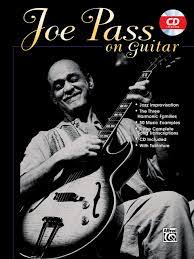 |
Joe Pass on Guitar – guitar book |
| Joe Pass – Omnibook For C instruments Transcribed exactly from his recorded solos with Tablature |
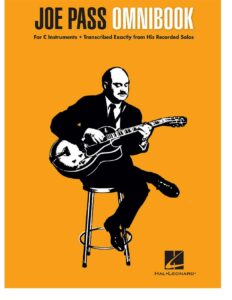 |
Joe Pass – Omnibook For C instruments Transcribed exactly from his recorded solos with Tablature |
| Joe Pass – The Blue Side of Jazz (Booklet Jazz Guitar lesson pdf) | Joe Pass – The Blue Side of Jazz (Booklet Jazz Guitar lesson) |
 |
| Joe Pass – Virtuoso Standards guitar songbook collection with Tablature |
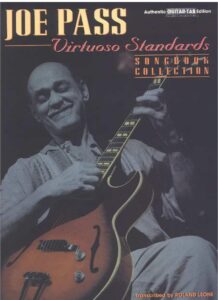 |
Joe Pass -Vituoso Standards guitar songbook collection |
| Joe Pass & Roland Leone – Note For Note (Mel Bay) guitar with tablature |
 |
Joe Pass & Roland Leone – Note For Note (Mel Bay) guitar with tablature |
| Joe Pass And Herb Ellis Jazz Duets Guitar |
 |
Joe Pass And Herb Ellis Jazz Duets Guitar |
| Joe Pass Blues, Chords and Substitutions Chord Encounters for Guitar Book 1 + Audio Mp3 Tracks To Play Along |
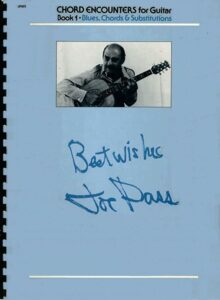 |
Joe Pass Blues, Chords and Substitutions Chord Encounters for Guitar Book 1 + Audio Mp3 Tracks To Play Along |
| Joe Pass Chord Solos |
 |
|
| Joe Pass Collection with Tablature, The |
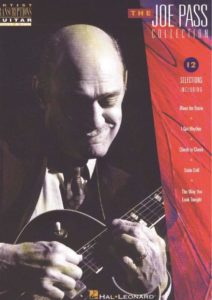 |
The Joe Pass Collection |
| Joe Pass Genius Of Joe Pass (Book) by Jim Ohlschmidt (Biography) |
 |
|
| Joe Pass Guitar Chords (Mel Bay) |
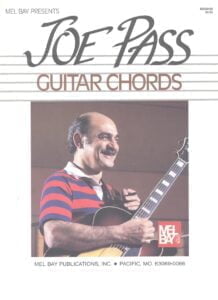 |
Joe Pass Guitar Chords (Mel Bay) |
| Joe Pass Guitar Style (Joe Pass and Bill Thrasher) |
 |
|
| Joe Pass Herb Ellis Jazz Duets G Blues (Two Guitars) |
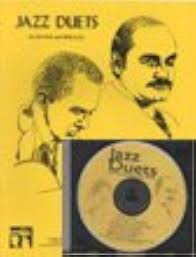 |
|
| Joe Pass Jazz Guitar Solos |
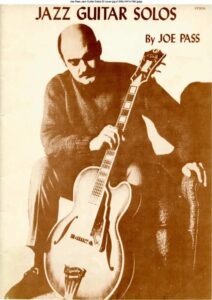 |
Joe Pass Jazz Guitar Solos |
| Joe Pass The Red Book Guitar Jazz Method |
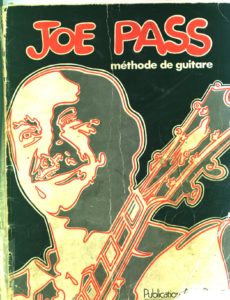 |
Joe Pass The Red Book |
| Joe Pass, The Best of – Guitar Signature Licks PDF + MP3 audio tracks Play Along with Tablature |
 |
Best Of Joe Pass – Guitar Signature Licks |
| Joe Sample And The Crusaders Street Life | Joe Sample And The Crusaders Street Life | |
| Joe Sample Crossover Keyboardist Volume 1 |
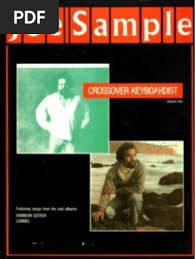 |
|
| Joe Sample Transcriptions |
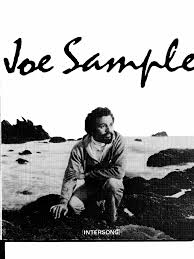 |
Joe Sample Transcriptions |
| Joe Sample Transcriptions Vol. 4 |
 |
Joe Sample Keyboard Technique Vol. 4 |
| Joe Satriani – Crystal Planet (Guitar) (Joe Satriani) Guitar Tablature |
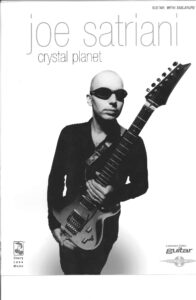 |
Joe Satriani – Crystal Planet (Guitar) (Joe Satriani) Guitar Tablature |
| Joe Satriani – Guitar Secrets (Guitar Educational) (Joe Satriani) Guitar Tablature |
 |
Joe Satriani – Guitar Secrets (Guitar Educational) (Joe Satriani) Guitar Tablature |
| Joe Satriani – Super Colossal (Joe Satriani) Guitar Tablature |
 |
Joe Satriani – Guitar Secrets (Guitar Educational) (Joe Satriani) Guitar Tablature |
| Joe Satriani Anthology Songbook Guitar TABs |
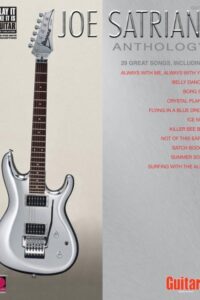 |
Joe Satriani Anthology Songbook Guitar TABs |
| Joe Satriani Collection with Tablature |
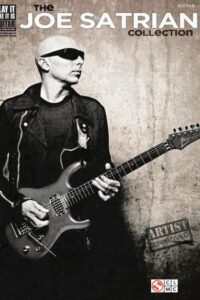 |
Joe Satriani Collection with Tablature |
| Joe Satriani Guitar Secrets with Tablature 41 private lessons as featured in Guitar |
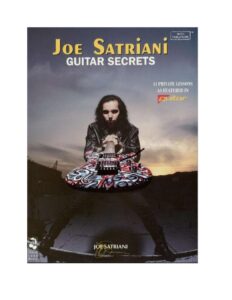 |
|
| Joe Satriani Signature Licks Guitar Book, The Best Of (with Audio Mp3 Tracks Play Along with Tablature) |
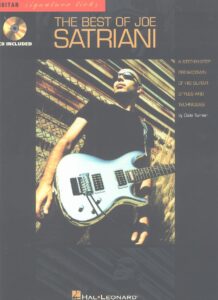 |
Signature Licks – The Best Of Joe Satriani |
| Joe Satriani Time Machine, Book 1 (Joe Satriani) Guitar Tablature |
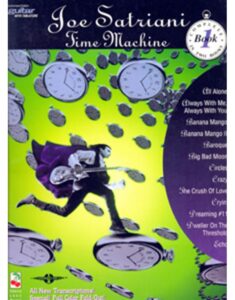 |
|
| Joe Satriani Time Machine, Book 2 (Joe Satriani) Guitar Tablature |
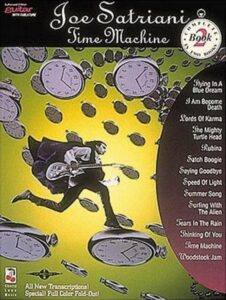 |
|
| Joe Zawinul – Midnightmood |
 |
|
| Joep Beving – Ab Ovo |
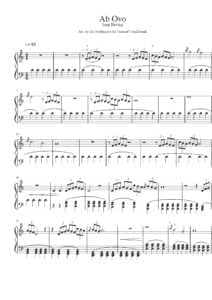 |
Ab_Ovo_Joep_Beving |
| Joep Beving – Ala |
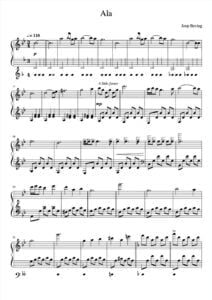 |
|
| Joep Beving – Midwayer (piano sheet music) |
 |
|
| Joep Beving – Sleeping Lotus |
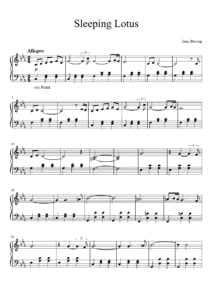 |
|
| Joep Beving – Sleeping Lotus – Solipsism (Piano Solo Sheet Music) (Musescore File).mscz | ||
| Joep Beving – Sonderling |
 |
|
| Joep Beving 3 Transcriptions For Piano Solo |
 |
Joep Beving sheet music score download partitura partition spartiti |
| Joep Beving Adrift In Aether Piano Solo | Joep Beving Adrift In Aether Piano Solo | |
| Joep Beving Etude |
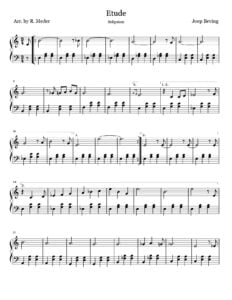 |
|
| Joep Beving Hanging D Start Very Slowly … sheet music for piano solo | Joep Beving Hanging D Start Very Slowly … sheet music for piano solo | |
| Joep Beving Solitude |
 |
|
| Joep Beving The Light She Brings | Joep Beving The Light She Brings (sample) | |
| Joep Beving Zoetrope |
 |
|
| Joey Alexander Draw Me Nearer Piano |
 |
|
| Jóhann Jóhannsson – Domestic Pressures |
 |
|
| Jóhann Jóhannsson – A Game Of Croquet |
 |
|
| Jóhann Jóhannsson – A Model Of The Universe (from The Theory of Everything) |
 |
|
| Jóhann Jóhannsson – By The Roes, And By The Hinds Of The Field |
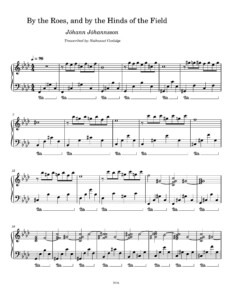 |
|
| Jóhann Jóhannsson – Epilogue (The Theory Of Everything) |
 |
|
| Jóhann Jóhannsson – Flight From The City (For Solo Piano) |
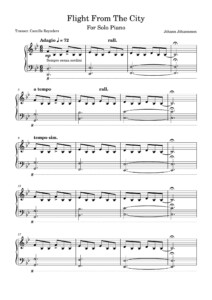 |
|
| Johann Johannsson – Forces Of Attraction (from The Theory of Everything) |
 |
|
| Jóhann Jóhannsson – The Dreams That Stuff Is Made Of (from The Theory of Everything) |
 |
|
| Johann Pachelbel – Canon In D | ||
| Johannes Bornlof Nocturnal Waltz |
 |
|
| Johannes Brecht Imperfect Moments Pt. 4 Piano |
 |
|
| Johannes Brecht Imperfect Moments Pt. 4 Piano.mxl | ||
| John 5 Book Of John |
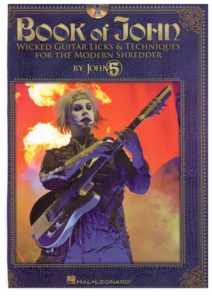 |
|
| John Abercrombie Jazz Guitar Solos Transcribed by Josh Workman and Christopher Jentsch |
 |
John Abercrombie Jazz Guitar Solos |
| John Adams Short Ride In A Fast Machine For Piano Solo | John Adams Short Ride In A Fast Machine For Piano Solo-1st page | |
| John Adams China Gates For Piano | John Adams China Gates For Piano | |
| John Adams Eros Piano And Chamber Orchestra |
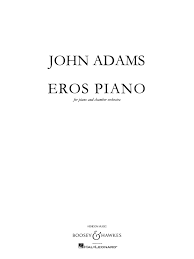 |
|
| John Adams Phrygian Gates For Piano | John Adams Phrygian Gates For Piano | |
| John Armatrading The Weakness in Me from Walk under Ladders Piano Vocal guitar | John Armatrading The Weakness in Me from Walk under Ladders Piano Vocal guitar | |
| John Barnes Chance – Variations On A Korean Folk Song (Arr. For 2 Pianos) (Musescore File).mscz | ||
| John Barry Dances With Wolves |
 |
John Barry – Dances with Wolves |
| John Barry The Persuaders Theme (sheet music) | John Barry-The Persuaders | |
| John Barry We have all the time in the world | John Barry We have all the time in the world | |
| John Barry – Born free |
 |
|
| John Barry – Out of Africa (Main Theme) Easy Piano Solo transcr. |
 |
|
| John Barry – Out Of Africa (Main Theme) Easy Piano Solo Transcr. (Musescore File).mscz | ||
| John Barry – Out Of Africa (piano selections) |
 |
Out of Africa |
| John Barry – Somewhere In Time | somewhere in time theme | |
| John Barry – Somewhere In Time (Musescore File).mscz | ||
| John Barry Somewhere In Time (Theme) |
 |
|
| John Bayless – O come all ye faithfull (sheet music transcription) | John Bayless – O come all ye faithfull (sheet music transcription) | |
| John Bayless – White Christmas (sheet music transcription) | John Bayless – White Christmas (sheet music transcription) | |
| John Brimhall The John Brimhall Piano Method Book 1 |
 |
|
| John Brimhall The John Brimhall Piano Method Book 2 |
 |
|
| John Brimhall The John Brimhall Piano Method Book 5 |
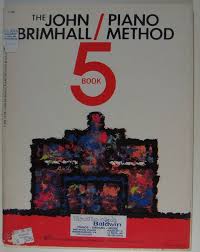 |
|
| John Brimhall The John Brimhall’s Adult Piano Course Complete Level 1, 2 and 3 |
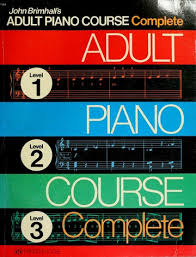 |
|
| John Cage Kyle Gann- Silence Lectures and Writings 50th Anniversary Edition (Biography) |
 |
|
| John Cage – Dream |
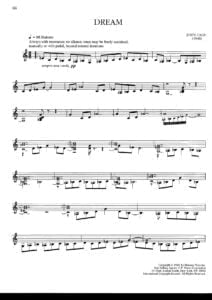 |
|
| John Cage – Five Any 5 voices or instruments |
 |
|
| John Cage – Piano works 1938-1948 (book sheet music) |
 |
John Cage piano works |
